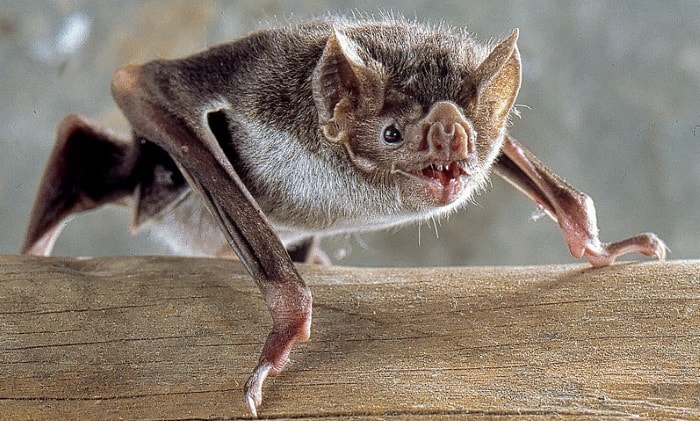Rabies in Peru: Risk and Vaccinations

The common vampire bat (Desmodus rotundus). Sorry, but you are one ugly little creature (photo Uwe Schmidt, Wikimedia Commons)
A rabies shot isn’t normally one of the recommended vaccinations for Peru, but there is a risk of rabies in Peru, especially in certain situations and activities.
The vaccine itself is safe and generally free from side effects, but the injections are expensive. A series of three or four pre-exposure shots costs at least $1,000 in the USA (according to the CDC, “a course of rabies immune globulin and four doses of vaccine given over a two-week period typically exceeds $3,000”). In the UK, a course of three doses costs from £120 to £170.
That’s a lot of money, especially in the USA. And like the great malaria debate, the rabies vaccination is one of those “should I/shouldn’t I?” situations.
You don’t want to spend a large chunk of your backpacking savings on a vaccination that you might not need, but you’re not entirely sure if it’s a bad idea to head to Peru without the jabs. So, what do you do?
Rabies Vaccine Advice from Around the Web
You’ll probably need a few vaccinations for Peru, so ask your doctor about the rabies jab while you’re there. In the meantime, the following websites will give you a fairly good idea of whether or not you need the rabies vaccination for Peru:
Travel Medicine: “Recommended for travelers spending time outdoors in rural areas where there is an increased risk of animal bites. Children are considered at higher risk because they tend to play with animals and may not report bites. Pre-exposure vaccination eliminates the need for rabies immune globulin in the event of a high-risk animal bite, but does not eliminate the need for treatment with the vaccine.”
MDTravelHealth: “For travelers spending a lot of time outdoors, or at high risk for animal bites, or involved in any activities that might bring them into direct contact with bats.”
IAMAT: “advised for persons planning an extended stay or on working assignments in remote and rural areas, particularly in Africa, Asia, Central and South America. The pre-exposure series simplifies medical care if the person has been bitten by a rabid animal.”
Lonely Planet: “Those at high risk for rabies, such as animal handlers and spelunkers (cave explorers), should certainly get the vaccine. In addition, those at lower risk for animal bites should also consider asking for the vaccine if they might be traveling to remote areas and might not have access to appropriate medical care if needed.”
Medic8: “Travellers with extensive unprotected outdoor exposure in rural areas, such as might be experienced while bicycling, camping, hiking, or engaging in certain occupational activities, might be at high risk even if their trip is brief. Casual exposure to cave air is not a concern, but cavers should be warned not to handle bats.”
NaTHNaC: Recommended for people a) travelling to remote areas where medical care is not readily available b) undertaking higher risk activities c) travelling for long periods through rabies endemic countries d) at occupational risk e.g. vets, animal handlers, and laboratory workers who handle the virus.

Who Needs the Rabies Shot for Peru?
So, the recurring advice points towards a few circumstances where the rabies vaccination should definitely be considered:
- Anyone planning on spending time in remote, rural areas where getting medical care could be a problem.
- Anyone expecting to handle animals on a regular basis while in Peru, such as volunteer workers on nature reserves, researchers etc.
- For spelunkers (anyone going cave exploring/potholing).
The last two are pretty clear-cut. If you’ve volunteered for an animal-handling position on a nature reserve, or something similar, you should definitely consider the vaccination (if you can, seek more advice from the place where you’ll be working). And if you’re heading to Peru with the intention of crawling into a whole bunch of bat-infested caves, you should probably be vaccinated against rabies.
As for travelers in “remote, rural areas,” that’s not so clear-cut. There are plenty of remote, rural locations in Peru, but not all of them will carry a risk of rabies.
Bats and the Risk of Rabies in Peru
Remember, we’re not necessarily talking about rabid dogs when we talk about the risk of rabies. Ever since a mass vaccination campaign was conducted in 1985, the number of rabies cases from dog bites has been greatly reduced in Peru.
The real problem, and the reason why spelunkers are at risk, is bats. Vampire bats. Yep, it sounds dramatic, but it’s a serious issue in parts of Peru. Have a look at this info from the Rabies Control website:
“In the Northern region on the Peruvian Amazon jungle, exposures to vampire rabies transmitted by the hematophagous bat, Desmodus rotundus, are one of the most frequent public health problems affecting the native population. From 1975 to 2004 at least 20 vampire rabies outbreaks in humans have occurred among this population, killing around 110 people.”
More outbreaks have occurred since 2004, the latest as recently as August 2010. Again, these were in the remote north-east of the Peruvian Amazon. Health workers vaccinated 500 people from the Awajun indigenous tribe after four children died after being bitten by rabid vampire bats (see this BBC report).
So if you’re planning a lengthy expedition to the remote regions of the north-eastern Peruvian Amazon, you should consider a pre-travel rabies vaccination. For most backpackers, however, the rabies vaccination is not necessary unless you have a specific reason for getting it. If you’re largely sticking to the Peruvian gringo trail, for example, then the risk of rabies in Peru will be very low and you won’t need a vaccination.
_____________________________________
Always consult a doctor before setting off on your Peru vacation. This article is a source of information to help with your ultimate decision, and is in no way a substitute for professional medical advice.











3 comments for “Rabies in Peru: Risk and Vaccinations”